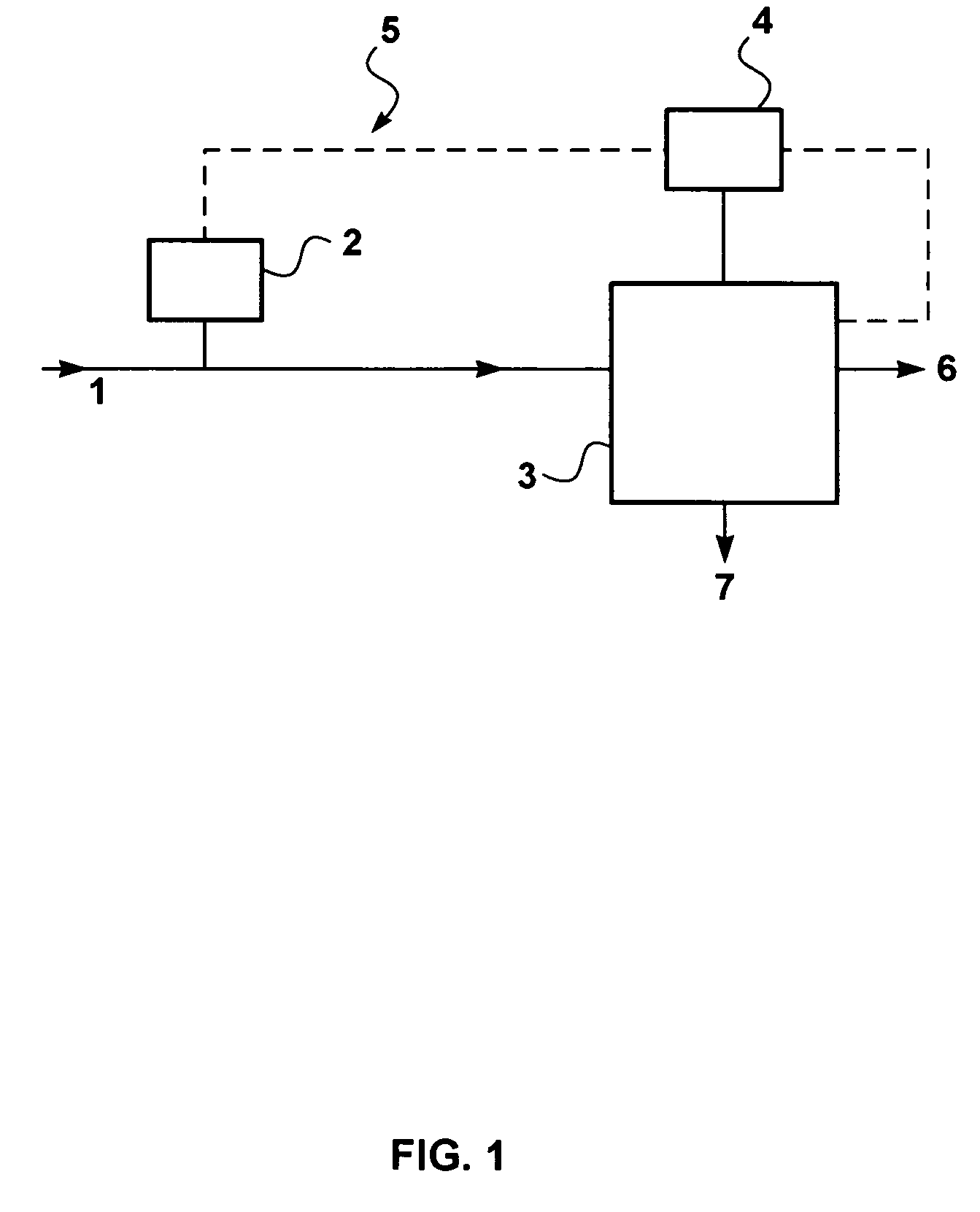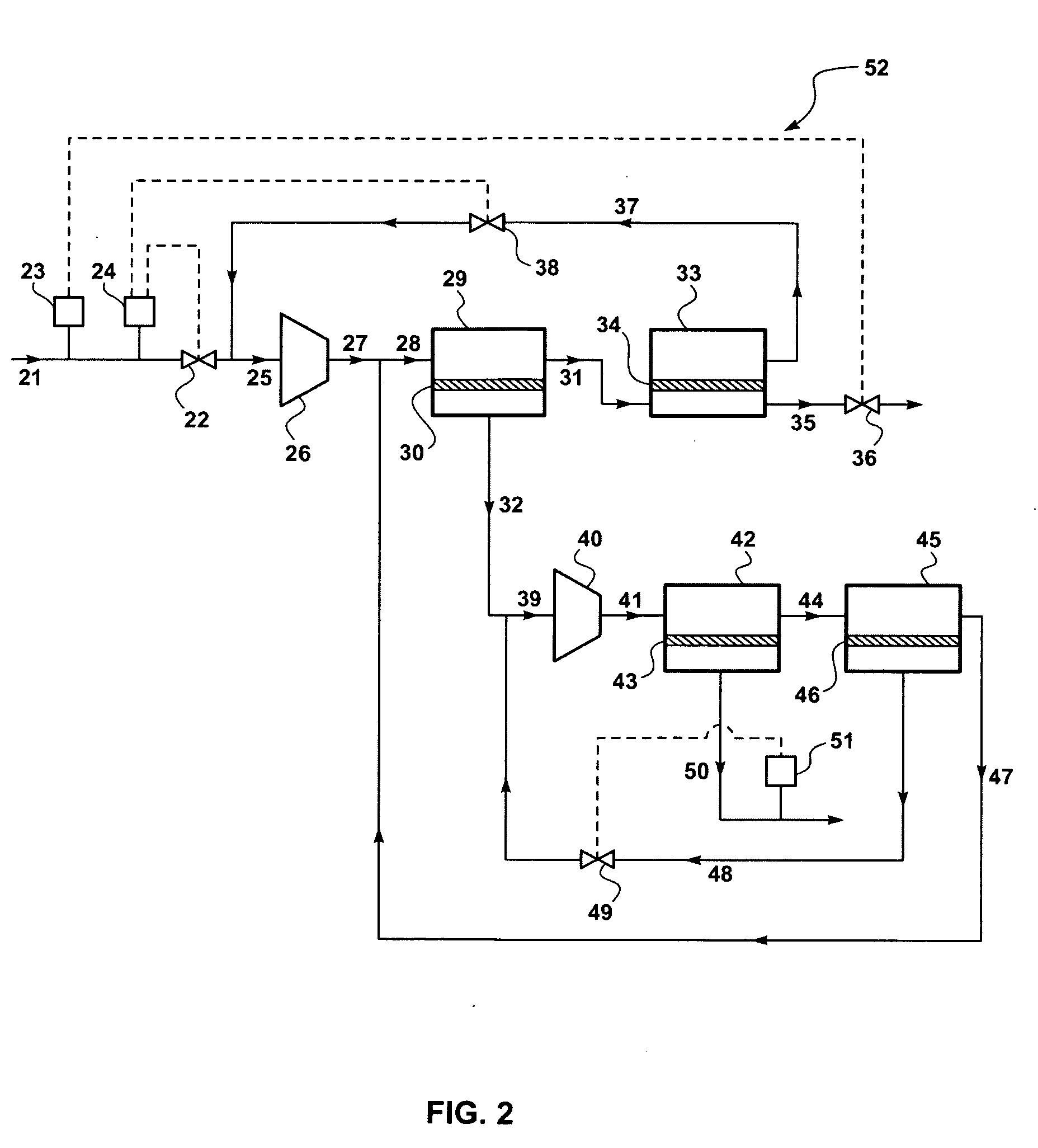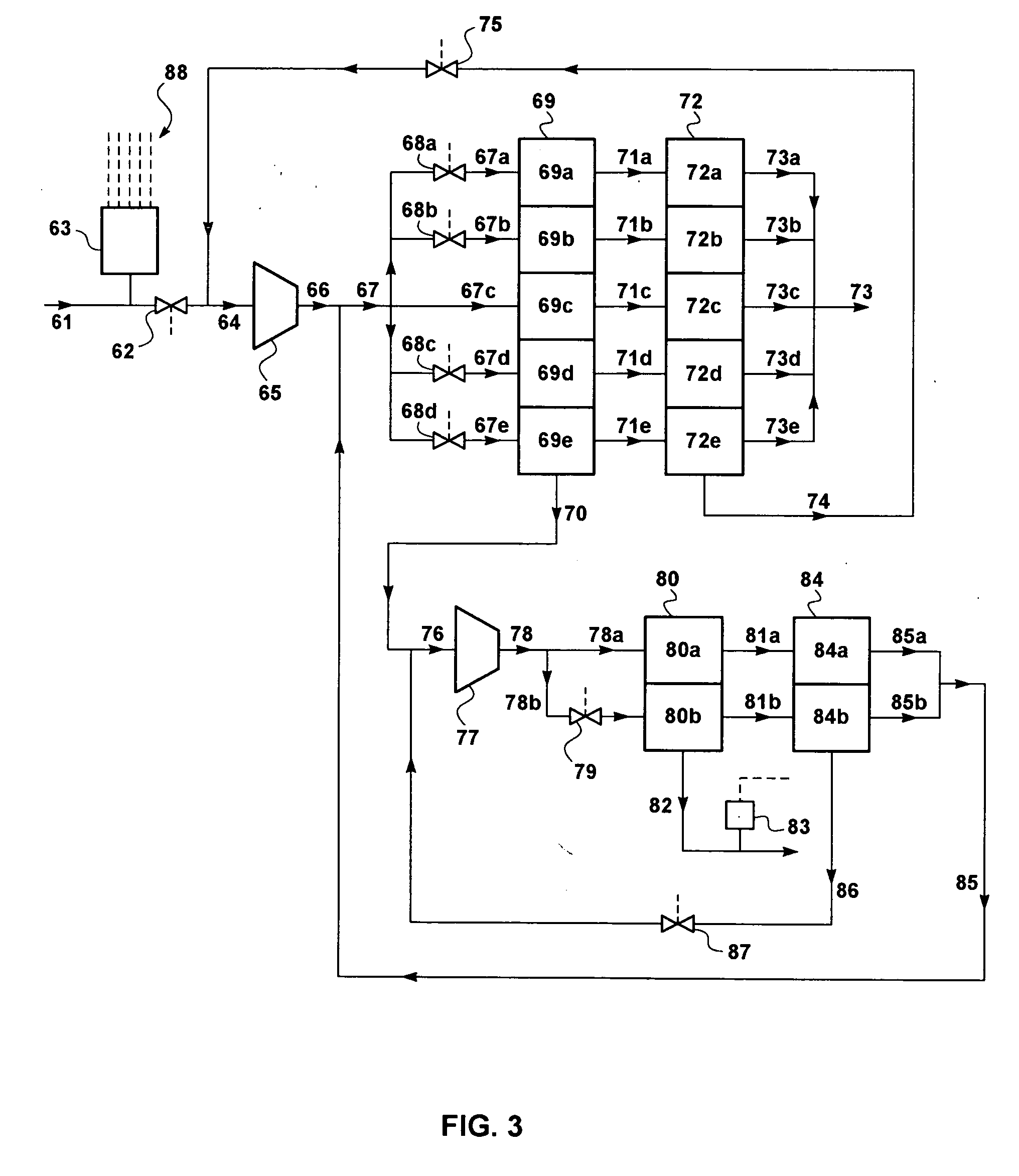Natural gas treatment process for stimulated well
a well stimulation and treatment process technology, applied in the separation process, auxillary pretreatment, borehole/well accessories, etc., can solve the problems of unsuitable gas to be sent to its original destination, environmental damage, and clearly not practicable to apply cryogenic technology for such a short-term us
- Summary
- Abstract
- Description
- Claims
- Application Information
AI Technical Summary
Benefits of technology
Problems solved by technology
Method used
Image
Examples
example 1
Embodiment of FIG. 2
[0161] Computer calculations were performed with a modeling program, ChemCad 5.5 (ChemStations, Inc., Houston, Tex.), to illustrate the process of the invention for removal of nitrogen after stimulation of a natural gas well. The process was assumed to be carried out as shown in FIG. 2.
[0162] To model the behavior of a process control system varying process parameters in response to changing feed gas properties, a series of calculations was performed for natural gas containing a fracturing gas content varying from 31 vol % nitrogen to 12 vol % nitrogen. The target was to reduce the nitrogen content in the product stream to about 10 vol % under all conditions, so that the gas could be pooled with gas from other wells that are in regular production mode.
[0163] Secondary targets were to achieve high levels of gas recovery into the product stream, and to control the amount of compressor horsepower used by the process.
Calculation 1: Raw gas composition: 31 vol % n...
example 2
Variable Membrane Area: Embodiment of FIG. 3
[0179] Computer calculations were performed with ChemCad 5.5 to illustrate the process of the invention shown in FIG. 3. It was assumed that the first stage membrane banks, 69 and 72, each contain 5 tubes of membrane modules, exactly as shown in the figure, but that the second stage membrane banks, 80 and 84, each contain 7 tubes of membrane modules. It was assumed that a valve is provided at the inlet to every tube of the first steps, 69 and 80, of both stages, so that the number of tubes-on-stream can be varied from 0 to 12.
[0180] As with Example 1, series of calculations was performed for natural gas containing a fracturing gas content varying from 31 vol % nitrogen to 12 vol % nitrogen. The target was again to reduce the nitrogen content in the product stream to about 10 vol %, as well as to achieve high levels of gas recovery and control compressor horsepower used.
Calculation 1: Inlet gas composition: 31% nitrogen. Feed gas flow ra...
case 2
gas composition: 20% nitrogen. Feed gas flow rate: 2.8 MMscfd.
[0183] The calculation was repeated assuming that the nitrogen content of the feed gas has dropped to 20 vol % and the feed gas flow rate has dropped to 2.8 MMscfd.
[0184] The membrane area was assumed to be reduced by closing two of the valves to the first steps of the first membrane stage, and one of the valves to the first steps of the second membrane stage. Valves 75 and 87 were assumed to be adjusted by the process control system, so that the recycle flow of streams 74 and 85 is reduced. As this embodiment does not have a pressure regulating valve on the residue discharge line, the feed pressure for both membrane stages remains at about 500 psia.
[0185] The results of the calculation are shown in Table 6.
TABLE 6Stream61666774737076858682Flow (MMscfd)2.83.34.90.50.53.96.41.62.52.3Temp (° F.)120120112858010110296104116Pressure (psia)305515503115466115115503115103Component (vol %)Nitrogen2024284268211837159.8Methane78...
PUM
| Property | Measurement | Unit |
|---|---|---|
| vol % | aaaaa | aaaaa |
| time | aaaaa | aaaaa |
| vol % | aaaaa | aaaaa |
Abstract
Description
Claims
Application Information
 Login to View More
Login to View More - R&D
- Intellectual Property
- Life Sciences
- Materials
- Tech Scout
- Unparalleled Data Quality
- Higher Quality Content
- 60% Fewer Hallucinations
Browse by: Latest US Patents, China's latest patents, Technical Efficacy Thesaurus, Application Domain, Technology Topic, Popular Technical Reports.
© 2025 PatSnap. All rights reserved.Legal|Privacy policy|Modern Slavery Act Transparency Statement|Sitemap|About US| Contact US: help@patsnap.com



